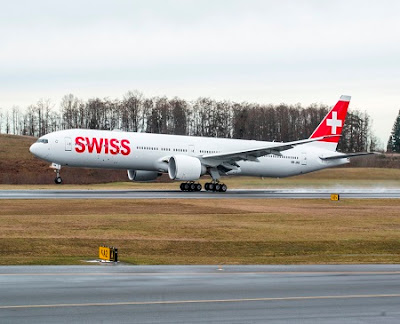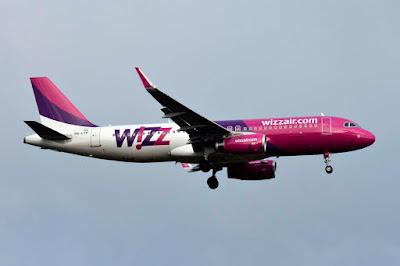Routes Onlines - Richard Maslen
The airline’s current three times weekly Jakarta – London Gatwick operation, which acts as a continuation of flights from the Indonesian capital to Amsterdam, will grow to a five times weekly schedule when the move to Heathrow takes place from March 31, 2016 as it draws on SkyTeam alliance transfer flows via the hub airport to bring additional passenger flows onto the city pair.
Article Start
As we first revealed in November last year, Asian carrier, Garuda Indonesia is to switch its London operation from Gatwick to Heathrow Airport this summer and at the same time will introduce the first and only non-stop flight between the UK and Indonesia. The move follows the acquisition of a suitable pair of slots at the heavily congested hub airport after six years of trying.
The airline’s current three times weekly Jakarta – London Gatwick operation, which acts as a continuation of flights from the Indonesian capital to Amsterdam, will grow to a five times weekly schedule when the move to Heathrow takes place from March 31, 2016 as it draws on SkyTeam alliance transfer flows via the hub airport to bring additional passenger flows onto the city pair.
Asia's top carriers under one roof
Join Air Asia Group, Cebu Pacific, Japan Airlines, Jetstar and more at Routes Asia 2016.
The move to Heathrow is part of Garuda Indonesia’s strategy to strengthen its presence in Europe and meet its commitment as the national flag carrier, to connect Indonesia to the world. The route will be flown using a Boeing 777-300ER configured in a three-class arrangement.
“Making the move to Heathrow Airport has been an ambition of ours since joining SkyTeam in March 2014. Heathrow’s pivotal role in servicing the alliance’s 1,052 destinations makes it an ideal departure airport for our passengers. Flying non-stop direct to Jakarta means we will truly be the most efficient way to reach Indonesia from the UK,” said Jubi Prasetyo, General Manager UK & Ireland, Garuda Indonesia.
The Asian flag carrier first revealed in early 2013 its intent to expand its flights to Europe with the resumption of air services to the UK following its successful reintroduction of flights to Amsterdam in June 2010. The aim was to start a direct flight between Jakarta and London from the final quarter of that year, the first non-stop scheduled air link between Indonesia and the UK using its new Boeing 777-300ER airliners.
However, after twice delaying the launch of a proposed non-stop link between Jakarta and London, the new SkyTeam entrant revealed in March 2014 during Routes Asia in Kuching, Sarawak, Malaysia that it would instead serve the UK capital with a one-stop strategy via Amsterdam from September 2014.
Garuda’s plans to introduce non-stop flights to Europe have been restricted by limited runway capacity at Jakarta’s Soekarno-Hatta International Airport, with the pavement classification number (PCN) of the runways and apron at Soekarno-Hatta Airport not meeting the required level of strength that is typically needed for the operation of a full capacity, heavy duty commercial airliner such as the Boeing 777-300ER. Even though this new Heathrow service will operate non-stop from the UK, the outbound leg from Indonesia will make a supplementary stop in Singapore, albeit operating as a direct service.
The increased frequency will boost British businesses, which will benefit from improved direct access to the largest economy in South East Asia and one of UKTIs 17 ‘High Growth Markets’. British exporters in particular will be better positioned to utilise the 20 tonne cargo hold onboard Garuda’s 777-300ERs, with the direct connection reducing the time it takes to get goods to market, and offering a real alternative to the continental gateways to Asia.
Because Heathrow is full, slot availability for long-haul routes is rare. The agreement with Garuda Indonesia took six years to come to fruition, according to airport officials, who confirm that Heathrow currently has a queue of thirty airlines waiting for slots. Due to the capacity constraints some long-haul airlines have had to operate from other predominantly point-to-point UK airports, but many more have instead opted to base their operations at hubs abroad, acknowledged its Chief Executive Officer, John Holland-Kaye.
“As the UK's only hub, Heathrow is able to support regular direct flights to 75 long haul destinations not served by any other UK airport. With expansion, we can bring the world to Britain's doorstep by adding up to 40 more long haul routes to high growth markets,” he said.
Analysis of Sabre demand data shows that the United Kingdom was the second largest market in terms of O&D demand between Jakarta and Europe in 2014, just ahead of Germany. London Heathrow was the third largest single source or destination market in Europe to/from the Indonesian capital, supported by indirect flights from the likes of Emirates Airline via Dubai, Singapore Airlines via Singapore, Qatar Airways via Doha, Etihad Airways via Abu Dhabi and Malaysia Airlines via Kuala Lumpur.
Garuda’s return to Europe in 2010 helped stimulate O&D demand on its initial route between Jakarta and Amsterdam and passenger numbers have grown since that year, increasing 16.1 per cent in 2014.
In the first six months of last year the Amsterdam market was up a further 7.7 per cent versus the same period the previous year.
Garuda Indonesia first started serving the UK market in the mid-1980s as the terminus point on existing services to other points in Europe. A dedicated London operation was introduced from Jakarta in October 1992, via Abu Dhabi while a Bangkok stop was added to the itinerary in subsequent years and flights were also offered from Denpasar. In October 1997 the London operation was suspended for a two year period but resumed from November 1999 on the Denpasar – Bangkok – London routing and latterly via Singapore. The airline departed the UK market in May 2003, leaving Amsterdam as its only European destination, a route which was eventually closed in October 2004.


















































